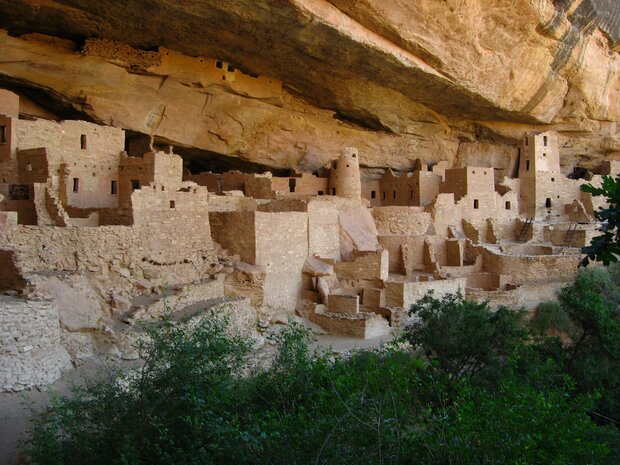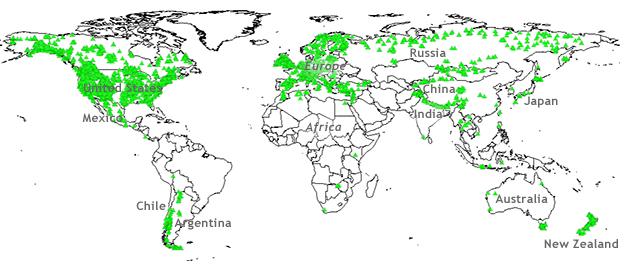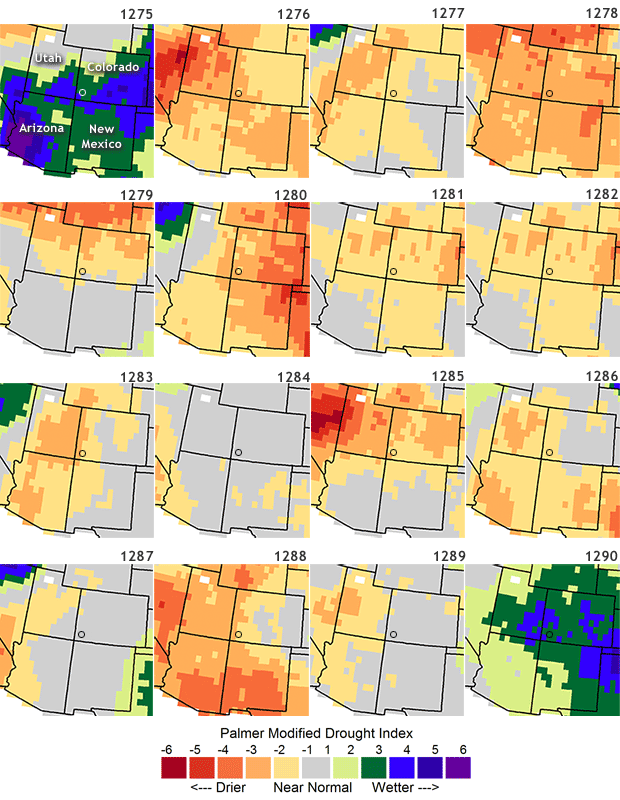
Most of us learned as children that the age of a tree could be found by counting its rings. Rings of trees growing in temperate climates can indeed tell their age through their annual rings and also help determine the age of wood used to construct buildings or wooden objects. The ages of wooden objects can be revealed by cross-dating, the process of matching ring patterns between wood samples of known and unknown ages.

The underlying patterns of wide or narrow rings record the year-to-year fluctuations in the growth of trees. The patterns, therefore, often contain a weather history at the location the tree grew, in addition to its age. In dry environments, such as the Middle East or U.S. Southwest, tree rings typically record wet or dry years, and in cooler areas (high latitudes or high elevation), the ring widths are often a proxy for temperature.
Archeologists have used the ring patterns in building timbers to estimate construction dates for some of the world’s most famous buildings, including the cliff dwellings at Mesa Verde National Park (nearly 1,000 years old) and the Church of the Nativity in Bethlehem (nearly 1,500 years old).

NOAA National Centers for Environmental Information (NCEI) houses the International Tree-Ring Data Bank (ITRDB), which contains ring width data from forests worldwide, plus ring width data from old buildings, and even from rare Stradivari violins. The ITRDB contains ring width data from trees at over 4,600 locations on six continents, providing tree growth histories from around the world. New additions from field scientists are added regularly.

Climate scientists compare the tree growth records to local weather records. For locations where a good statistical match exists between tree growth and temperature or precipitation during the period of overlap, the ring widths can be used to estimate past temperature or precipitation over the lifetime of the tree.
In many parts of the world, trees can provide a climate history for hundreds of years, with some extending back 1,000 years or more. The resulting climate histories enhance our knowledge of natural climate variability and also create a baseline against which human-induced climate change can be evaluated. NCEI archives these climate reconstructions in addition to the tree ring measurements.
Tree ring data have been used to reconstruct drought or temperature in North America and Europe over the past 2,000 years. For example, tree ring based drought reconstructions for the American Southwest indicate a period of prolonged drought in the late 1200’s. Archeologists believe that the drought was a contributing factor in the Ancestral Pueblo People abandoning the famous cliff dwellings at Mesa Verde, never to return.

12-6-18 It is my understanding that tree rings sometimes give incorrect temperature compared to actual recorded temperature and have been compromised by manipulation of data(see hockey stick)!David H. Jackson,MD
Submitted by david h. jackson,md on Thu, 12/06/2018 - 23:05
Tree growth is an imperfect recorder of past climate, because trees are also affected by non-climatic factors including wind and insect damage and competition from nearby trees. These effects are minimized by collecting samples from numerous trees and averaging them together. The resulting reconstructions are validated with rigorous statistical analysis, and not used unless statistically valid. There has never been any manipulation of data to skew results.
Submitted by Bruce Bauer on Mon, 12/10/2018 - 13:42
In reply to tree rings by david h. jackson,md
You forgot one very important variable- rain. A year might have heavier than average rain and be warmer than average but it might instead be colder than average. I see no way to distinguish those scenarios from centuries ago without a matching historical record - regardless of how many trees are sampled. Perhaps other temperature proxies might accurately indicate past temperatures but I doubt tree ring analysis can do that. Since climate change science needs accurate data, just how accurate do tree ring reserachers claim this data is? Joe Zorzin (forester with 47 years experience)
Submitted by Joe Zorzin on Mon, 06/17/2019 - 13:12
In reply to RE: tree rings by Bruce Bauer
"The resulting reconstructions are validated with rigorous statistical analysis, and not used unless statistically valid. There has never been any manipulation of data to skew results.
It is hard to say Tree Ring data is both curated for validity and say there "has never been any manipulation of data" at the same time.
Is the complete data set preserved (all data accepted and data rejection alike) in these data sets? Otherwise, your assertion is hard to justify.
We know that some tree ring data was purposely tossed, wihere some of which was only by chance recovered when one of the authors died, and his data from his estate was published by his university.
Submitted by Paul A Snow on Mon, 04/29/2024 - 16:13
In reply to RE: tree rings by Bruce Bauer
What is your source?
Submitted by Peter Rathbun MA on Tue, 04/05/2022 - 21:58
In reply to tree rings by david h. jackson,md
I'm not sure what you're asking here. The whole post is about the International Tree Ring Data Bank at NOAA NCEI Paleoclimate Data Center.
Submitted by rebecca.lindsey on Wed, 04/06/2022 - 15:25
In reply to tree rings by Peter Rathbun MA
Tree rings have been used as indicators of either temperature or rainfall (actually precipitation, since it may also come in the form of snow), depending on location. In dry areas such as the US Southwest or the Middle East, tree ring widths can match 70% of the variability in measured precipitation for the period of overlap, which is the length of instrumental record (typically about 100 years). When the tree rings are a good match to the instrumental record, they can be used as indicators of past precipitation or drought for centuries before instrumental data are available. The maps above depict Palmer Drought Index, which is a combination of precipitation and temperature, as higher temperatures combined with lower rainfall produce water shortages (drought) which limits plant growth. In high elevation or high latitude locations, tree rings more typically respond to temperature. Statistical matching of ring widths to measured temperature or precipitation is always done, and only trees with strong correlations to the measured data are used in climate reconstructions.
Submitted by Bruce Bauer on Mon, 06/17/2019 - 18:36